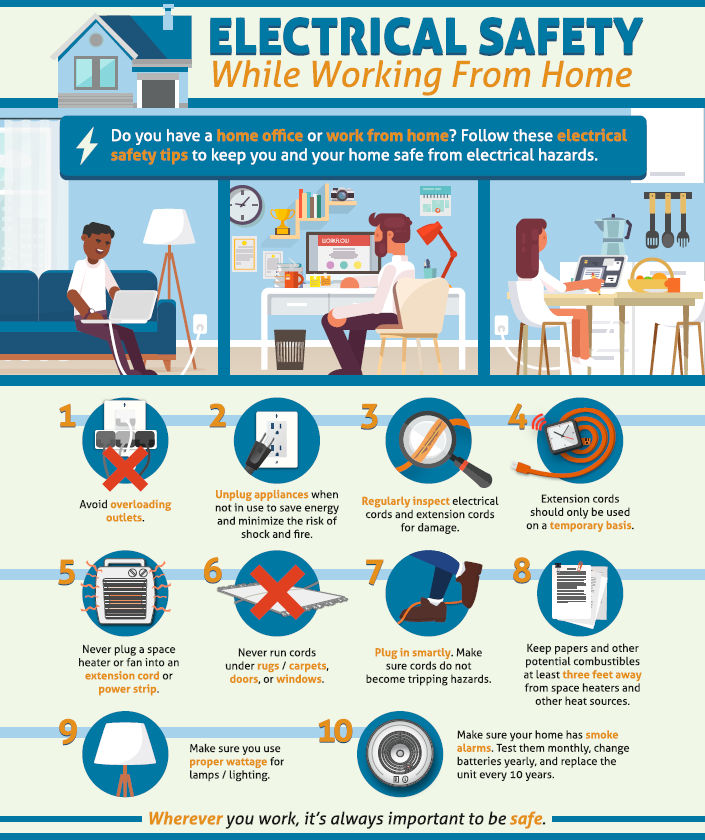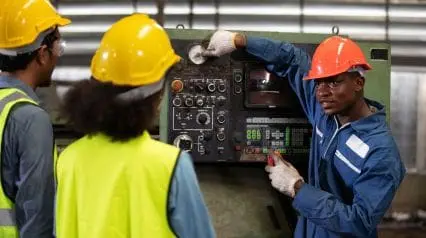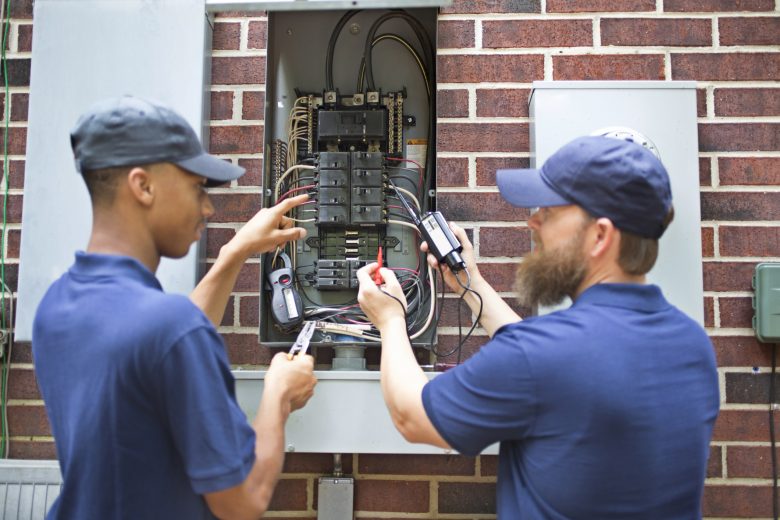Electrical safety training is essential for preventing workplace accidents and ensuring employee well-being. It equips workers with knowledge to handle electrical hazards safely.
Electrical safety training is crucial in any workplace that uses electrical systems. Workers learn how to identify potential hazards, use protective equipment, and follow safety protocols. This training covers the importance of proper grounding, circuit protection, and safe work practices.
By understanding these elements, employees can prevent electrical shocks, fires, and other accidents. Effective electrical safety training not only protects workers but also ensures compliance with safety regulations. Investing in this training can lead to a safer work environment and reduce the risk of costly incidents. Regular updates and refreshers keep everyone informed about the latest safety standards.
Introduction To Electrical Safety Training
Understanding electrical safety is vital for everyone. It prevents accidents and saves lives. Electrical safety training teaches important skills. It helps people stay safe around electricity.
The Importance Of Being Proactive
Being proactive in electrical safety saves lives. It prevents injuries and damages. Proactive measures include regular inspections and proper maintenance. This ensures all electrical equipment functions safely.
Proactive training helps workers identify potential hazards. It empowers them to take corrective actions immediately. This reduces the risk of accidents significantly.
Key Objectives Of Safety Training
The main goal of safety training is to prevent electrical injuries. There are several key objectives:
- Understanding Electrical Hazards: Recognize different electrical risks.
- Proper Use of Tools: Learn to use electrical tools safely.
- Emergency Procedures: Know what to do in emergencies.
- Personal Protective Equipment (PPE): Use PPE correctly to stay safe.
- Compliance with Regulations: Follow all safety laws and guidelines.
These objectives ensure that everyone knows how to work safely. They also help in creating a safer work environment.
Identifying Electrical Hazards
Electrical safety is crucial in any workplace. Identifying electrical hazards can save lives and prevent injuries. This section will help you understand how to identify common electrical risks and spot red flags in equipment and wiring.
Common Workplace Electrical Risks
Electrical risks are present in many workplaces. These risks can cause serious harm. Here are some common electrical hazards:
- Exposed Wiring: Wires without proper insulation can cause shocks.
- Overloaded Circuits: Too many devices on one circuit can lead to fires.
- Wet Conditions: Water and electricity do not mix. Wet areas increase the risk of shocks.
- Faulty Equipment: Broken tools and machines can cause electric shocks.
Spotting Red Flags In Equipment And Wiring
Inspecting equipment and wiring is vital. Look for these red flags:
| Red Flag | What to Look For |
|---|---|
| Frayed Cords | Check for broken or exposed wires. |
| Burn Marks | Inspect plugs and outlets for scorch marks. |
| Odd Noises | Listen for buzzing sounds from outlets or equipment. |
| Frequent Tripping | Note if circuit breakers trip often. |
Keep an eye out for these signs. Early detection can prevent accidents. Regular checks and maintenance are essential.
Legal Requirements And Standards
Understanding the legal requirements and standards for electrical safety is crucial. These regulations ensure the safety of workers and the public. Compliance with these standards can prevent accidents and save lives.
Osha Regulations On Electrical Safety
The Occupational Safety and Health Administration (OSHA) sets stringent guidelines. Employers must follow these rules to protect their employees. Key OSHA regulations include:
- Proper labeling of electrical equipment
- Regular safety inspections
- Use of personal protective equipment (PPE)
OSHA also mandates training for employees working with electricity. This training covers hazard recognition, safe work practices, and emergency procedures.
National Electrical Code Compliance
The National Electrical Code (NEC) provides a benchmark for electrical safety. It is updated every three years to reflect new technologies and practices. Key areas covered by the NEC include:
- Installation of electrical equipment
- Grounding and bonding requirements
- Wiring methods and materials
Compliance with the NEC ensures safe electrical installations. This code helps prevent electrical fires and shocks.
| Regulation | Key Points |
|---|---|
| OSHA |
|
| NEC |
|
Both OSHA and NEC standards are vital for electrical safety. Following these regulations can prevent many accidents. Ensure your workplace complies with these standards.

Credit: osha4you.com
Components Of An Effective Training Program
Creating a comprehensive Electrical Safety Training program is crucial. It ensures workers understand the risks and safety measures. An effective program consists of several key components.
Curriculum Development
The curriculum should cover all essential topics. These include:
- Basic Electrical Concepts: Understanding voltage, current, and resistance.
- Safety Standards and Regulations: Knowledge of OSHA and NFPA guidelines.
- Hazard Identification: Recognizing potential electrical hazards in the workplace.
- Personal Protective Equipment (PPE): Proper use of gloves, goggles, and other gear.
Each topic must be detailed and clear. Visual aids and examples can enhance understanding.
Hands-on Training And Simulations
Hands-on training is vital for practical knowledge. Simulations help workers practice in a safe environment.
Key elements of hands-on training include:
- Equipment Handling: Proper use and maintenance of electrical tools.
- Emergency Procedures: Steps to follow during electrical incidents.
- Mock Drills: Simulated scenarios to practice real-life responses.
Instructors should supervise all activities. This ensures correct technique and safety.
These components form the backbone of a strong training program. They ensure workers are safe and prepared.
Personal Protective Equipment (ppe)
Ensuring electrical safety is crucial for protecting workers from hazards. Personal Protective Equipment (PPE) plays a vital role in this safety. PPE helps prevent injuries and accidents during electrical work. Let’s explore the essential aspects of PPE in electrical safety training.
Essential Ppe For Electrical Work
Wearing the right PPE is necessary for electrical safety. Each piece of equipment has a specific purpose.
- Insulated Gloves: Protect hands from electrical shocks.
- Face Shields: Shield the face from electrical arcs.
- Insulated Tools: Prevent electrical contact and short circuits.
- Flame-Resistant Clothing: Protects the body from burns.
- Safety Goggles: Protect eyes from sparks and debris.
Maintenance And Care Of Ppe
Proper maintenance of PPE ensures its effectiveness. Always inspect PPE before use.
- Inspect for Damage: Check for tears, cracks, or wear.
- Clean Regularly: Remove dirt and contaminants.
- Store Properly: Keep PPE in a clean, dry place.
- Replace When Necessary: Discard damaged or expired PPE.
Regular maintenance extends the life of PPE. It also ensures maximum protection for workers. Always follow manufacturer guidelines for care and replacement.
Emergency Response Procedures
Understanding emergency response procedures is crucial for electrical safety. Quick action can save lives and prevent further damage. This section covers essential steps to handle emergencies effectively.
Responding To Electrical Injuries
When someone suffers an electrical injury, immediate action is required. Follow these steps:
- Turn off the power source immediately.
- Do not touch the victim with bare hands.
- Use a non-conductive material to separate the victim from the source.
- Check for breathing and pulse.
- Call emergency services right away.
- Administer CPR if needed and if trained to do so.
Having a first aid kit nearby is essential. Ensure all team members know its location.
Evacuation Plans And Drills
Proper evacuation plans are vital for safety. Ensure every team member understands the plan. Regular drills help reinforce these procedures.
Consider the following key points:
- Identify all exit routes and keep them clear.
- Assign evacuation roles to team members.
- Conduct regular evacuation drills.
- Use clear and concise evacuation maps.
Below is a sample evacuation drill schedule:
| Month | Drill Type | Responsible Team |
|---|---|---|
| January | Fire Drill | Safety Team |
| April | Electrical Emergency Drill | Maintenance Team |
| July | Full Evacuation Drill | All Staff |
| October | Earthquake Drill | Safety Team |
Regular drills ensure everyone knows their role. Being prepared reduces panic during real emergencies.
Cultivating A Culture Of Safety
Electrical safety is crucial in every workplace. Cultivating a culture of safety ensures everyone stays protected. This culture is built through continuous learning, improvement, and employee engagement.
Continuous Learning And Improvement
Continuous learning helps keep everyone updated on safety practices. Regular training sessions are important. They ensure employees know the latest safety protocols.
Improvement is a never-ending process. Employees should review safety measures regularly. This helps identify any gaps in the safety system. Addressing these gaps promptly can prevent accidents.
Safety audits play a key role. Conduct these audits periodically. They help in assessing the effectiveness of safety measures. Implement changes based on audit findings.
Encouraging Employee Engagement
Employee engagement is vital for a safety culture. Encourage open communication. Employees should feel comfortable reporting safety concerns.
Safety committees can be formed. These committees can include employees from different departments. They can discuss safety issues and suggest improvements.
Recognition programs can boost engagement. Recognize and reward employees who follow safety protocols. This motivates others to do the same.
Provide feedback regularly. Constructive feedback helps employees improve their safety practices.
| Engagement Activity | Benefit |
|---|---|
| Open Communication | Identify and address safety concerns quickly |
| Safety Committees | Collaborative approach to safety |
| Recognition Programs | Motivate employees to follow safety protocols |
| Regular Feedback | Continuous improvement in safety practices |

Credit: safetyculture.com
Assessment And Certification
Ensuring electrical safety in the workplace is crucial. Proper assessment and certification ensure that workers understand the risks and can handle electrical equipment safely. This process not only protects the workers but also the equipment and the environment.
Evaluating Competency Post-training
After the training, each participant’s competency is evaluated. This ensures they understood the material and can apply it. The evaluation process includes:
- Written Tests: Assessing theoretical knowledge.
- Practical Demonstrations: Evaluating hands-on skills.
- Observations: Supervisors watch participants perform tasks.
Each of these steps is important. They ensure the worker can safely perform their duties. Participants must pass all evaluations to receive certification. This guarantees they are competent and safe.
Renewal And Upkeep Of Certifications
Certifications need regular renewal. This keeps skills and knowledge up to date. The renewal process includes:
- Refresher Courses: Updates on new safety standards.
- Re-evaluation: Testing current knowledge and skills.
- Continuous Education: Ongoing learning opportunities.
Maintaining certification is crucial. It ensures ongoing safety in the workplace. Workers must stay informed about new techniques and standards. This constant learning helps prevent accidents and keep everyone safe.
Technological Advances In Safety Training
Technological advances have transformed electrical safety training. Modern tools make learning safer and more effective. These innovations enhance hands-on experience and accessibility. Let’s explore two key technological advances in safety training.
Virtual Reality And Simulation Training
Virtual Reality (VR) offers immersive training experiences. Trainees can practice in realistic, risk-free environments. VR helps them understand real-world scenarios without any danger.
Simulation training provides interactive, lifelike scenarios. These simulations prepare trainees for various electrical hazards. Trainees can make mistakes and learn without real-world consequences.
| Advantages of VR and Simulation Training |
|---|
| Realistic, hands-on experience |
| Risk-free learning environment |
| Immediate feedback |
Online Training Modules And Resources
Online training modules are accessible anytime, anywhere. These modules cover essential safety topics. They include interactive quizzes and videos to reinforce learning.
Various online resources supplement these modules. Trainees can access articles, tutorials, and forums. These resources provide additional information and support.
- Flexible learning schedule
- Interactive content
- Wide range of supplementary materials
Technological advances make electrical safety training more effective. VR and online modules provide valuable, practical learning experiences.

Credit: safestart.com
Case Studies And Lessons Learned
Understanding real-life incidents helps improve electrical safety. By analyzing past accidents, we learn valuable lessons. These lessons guide us in creating better safety practices. This section explores case studies and the important lessons learned.
Analyzing Past Electrical Accidents
Examining past electrical accidents helps identify common causes. Most accidents happen due to human error or faulty equipment. Here are some case studies:
| Case Study | Description | Lesson Learned |
|---|---|---|
| Case 1 | Worker electrocuted due to exposed wires | Always check for exposed wires before starting work |
| Case 2 | Fire caused by overloaded circuit | Ensure circuits are not overloaded |
| Case 3 | Electric shock from faulty equipment | Regularly inspect and maintain equipment |
Best Practices And Preventative Measures
To prevent electrical accidents, follow best practices. These practices help ensure safety and reduce risks. Here are some key measures:
- Always use proper personal protective equipment (PPE).
- Inspect tools and equipment before use.
- Follow lockout/tagout procedures.
- Keep work areas dry and clean.
- Avoid overloading electrical circuits.
Educating workers on these measures is crucial. Regular training sessions help reinforce these practices. Safety should always be a top priority.
Frequently Asked Questions
What Are The Five Electrical Safety Rules?
The five electrical safety rules are: 1. Always turn off the power before working on electrical circuits. 2. Use insulated tools and wear protective gear. 3. Avoid water when working with electricity. 4. Follow proper grounding procedures. 5. Regularly inspect electrical equipment for damage.
Does Osha Require Electrical Safety Training?
Yes, OSHA requires Electrical Safety training. Employers must ensure workers understand electrical hazards and safe work practices. Compliance helps prevent accidents and injuries.
How Much Does 70e Training Cost?
70E training costs vary depending on the provider and course format. Prices typically range from $200 to $1,000.
What Are The 5 Main Electrical Hazards?
The 5 main electrical hazards are electric shock, burns, fires, explosions, and arc flash. Always exercise caution around electricity.
Conclusion
Prioritizing electrical safety training can save lives and prevent accidents. Equip your team with essential knowledge and skills. Regular training ensures everyone stays updated on safety protocols. By investing in education, you create a safer work environment. Protect your workforce and enhance productivity through proper electrical safety practices.




1 thought on “Electrical Safety Training Essentials: Avoid Hazards!”